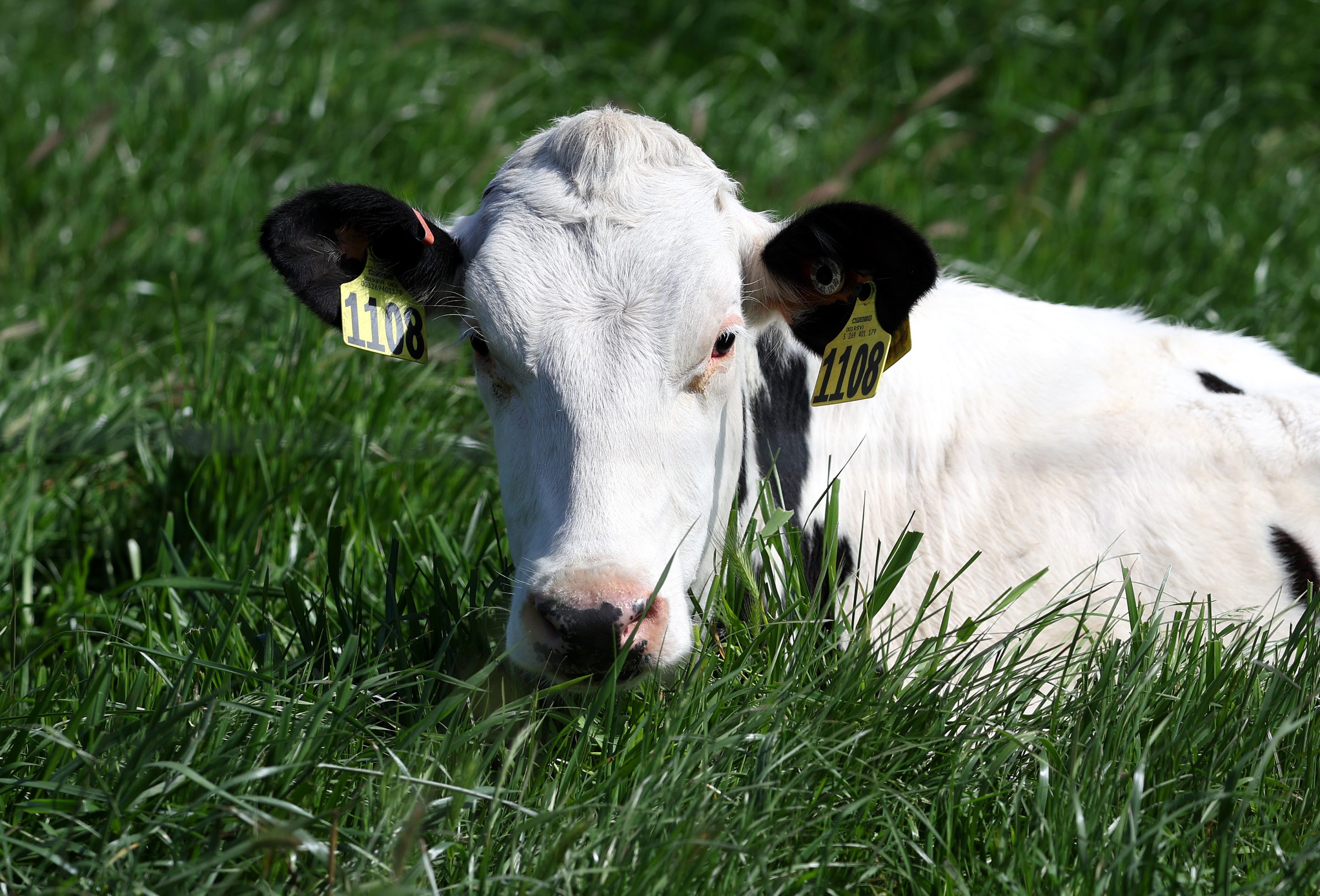In the realm of dairy consumption, a curious trend has emerged that defies both scientific advisement and public health warnings: the surge in raw milk sales. Despite the Centers for Disease Control and Prevention (CDC) and the Food and Drug Administration (FDA) categorizing raw milk as one of the ‘riskiest’ foods due to its potential to harbor harmful germs, the market research firm NielsenIQ reports a significant uptick in raw milk purchases. Since the confirmation of the bird flu virus in U.S. cattle, weekly sales of raw cow’s milk have increased by 21% to 65% compared with the same periods a year ago. This increase is particularly concerning given the recent outbreak of bird flu in dairy cows, which poses a new potential health risk.
Weekly sales of raw cow’s milk still have increased
The CDC’s website starkly warns, ‘Raw milk can be contaminated with harmful germs that can make you very sick.’ This warning is underscored by the detection of the bird flu virus, known as type A H5N1, in at least 42 herds across nine states. High levels of the virus have been found in the raw milk of infected cows, and while pasteurization has been confirmed to kill the virus, making pasteurized milk products safe to consume, the risk associated with raw, unpasteurized milk remains uncertain. The CDC has cautioned that consuming raw milk could theoretically lead to infection if the bird flu virus comes into contact with receptors in the nose, mouth, and throat, or if the virus is inhaled into the lungs. Moreover, there is a fear that increased exposure to the virus could allow it to mutate and become more transmissible among humans.
The regulatory landscape for raw milk is a patchwork of state-specific rules, with some states permitting retail sales in stores, others restricting sales to farms, and still others allowing ‘cowshares’ or consumption only by farm owners, employees, or ‘non-paying guests.’ Despite these regulations, raw milk products represent only a small fraction of overall dairy sales. Yet, the fervor for raw milk is palpable on social media, where testimonials and endorsements abound. Mark McAfee, owner of Raw Farm USA in Fresno, California, reports that his unpasteurized products are flying off the shelves, with customers seemingly acting in defiance of FDA recommendations.
This defiance is echoed by Bonni Gilley, a Fresno resident who has nourished her family with raw milk and unpasteurized dairy products for years. Gilley’s trust in the health benefits of raw milk remains unshaken by reports of bird flu in dairy cattle, reflecting a broader trend of skepticism towards government and expert advice. Matthew Motta, a researcher at Boston University, attributes this to a rejection of expertise driven by factors such as partisanship, political ideology, religion, and cultural values, rather than a lack of knowledge.
The health risks associated with raw milk are not trivial
The CDC has documented over 200 illness outbreaks linked to raw milk between 1998 and 2018, resulting in more than 2,600 illnesses and over 225 hospitalizations. Raw milk is more likely to cause illnesses due to dangerous bacteria such as campylobacter, listeria, salmonella, and E. coli. Alex O’Brien, from the Center for Dairy Research, likens drinking raw milk to ‘playing Russian roulette,’ emphasizing the increased risk of illness with each consumption.
Despite these risks, a 2022 FDA study indicates that about 4.4% of U.S. adults drink raw milk at least once a year, with approximately 1% consuming it weekly. This persistent consumption, even in the face of health warnings and the current bird flu outbreak, highlights the complex interplay between consumer beliefs, health behaviors, and public health messaging. As sales of raw milk continue to climb, the challenge for health authorities is to effectively communicate the risks and promote the benefits of pasteurized milk, meeting consumers where they are in their understanding and preferences.
The rise in raw milk sales amidst CDC warnings and the outbreak of bird flu in dairy cows presents a complex challenge for public health messaging. This section delves into the beliefs of consumers and the difficulties faced by health authorities in conveying the risks associated with raw milk consumption.
The allure of raw milk seems to be rooted in a combination of health beliefs, distrust in government, and the desire for natural products. Bonni Gilley, a Fresno resident, exemplifies this trend. She has been a long-time consumer of raw milk and remains undeterred by the bird flu outbreak, even suggesting that it has reinforced her preference for raw milk. Gilley’s stance is not isolated; it reflects a broader sentiment of skepticism towards governmental advice and a preference for what is perceived as more ‘natural’ or ‘pure’ food.

This skepticism is not merely a matter of misinformation or lack of awareness. According to Matthew Motta, a researcher at Boston University, the rejection of scientific advice is often motivated by deeper ideological beliefs, political affiliations, or cultural values. People are not necessarily uninformed; they are choosing to disregard expert recommendations based on their worldviews. This presents a significant obstacle for public health officials who are trying to promote the safety benefits of pasteurized milk.
The challenge is further compounded by the regulatory landscape, which varies significantly from state to state. Some states allow retail sales of raw milk, while others restrict it to farm sales or ‘cowshares.’ This patchwork of regulations can create confusion and make it difficult for federal health messages to resonate uniformly across different jurisdictions.
The power of social media cannot be underestimated
Testimonials and endorsements for raw milk are proliferating online, and figures like Mark McAfee, owner of Raw Farm USA, report soaring sales of unpasteurized products. McAfee’s observation that his customers often do the opposite of what the FDA recommends is a testament to the defiance some consumers feel towards government health directives.
Despite the small fraction of overall dairy sales that raw milk represents, the potential health risks are significant. The CDC has documented numerous outbreaks of illness linked to raw milk, with pathogens like campylobacter, listeria, salmonella, and E. coli being common culprits. Alex O’Brien from the Center for Dairy Research likens the consumption of raw milk to ‘playing Russian roulette,’ highlighting the increased risk of illness with each glass consumed.
The historical context is also telling. Before milk standards were established in 1924, dairy products were associated with approximately 25% of foodborne illnesses in the U.S. Now, thanks to pasteurization, dairy-related illnesses have plummeted to about 1%. Yet, the persistent consumption of raw milk, as indicated by a 2022 FDA study, shows that nearly 11 million U.S. adults drink raw milk at least once a year, with about 1% consuming it weekly.
To address this issue, public health communicators need to understand the motivations behind raw milk consumption and engage with consumers on their terms. As Motta suggests, this could involve leveraging social media to extol the health benefits of pasteurized milk and counter the narratives that drive people towards raw milk.
The spike in raw milk sales amidst bird flu concerns is a multifaceted problem that requires a nuanced approach. Public health officials must navigate a landscape of consumer beliefs, regulatory diversity, and the influential role of social media. By empathizing with consumer perspectives and employing strategic communication, there is hope for bridging the gap between scientific advisement and public behavior. The goal is not to disparage those who choose raw milk but to ensure that all consumers are making informed decisions that prioritize their health and well-being.
Related posts:
There’s bird flu in US dairy cows, but raw milk drinkers aren’t deterred
Raw milk sales spike despite CDC’s warnings of risk associated with bird flu
Seriously, don’t drink the raw milk: Social media doubles down despite bird flu outbreak





